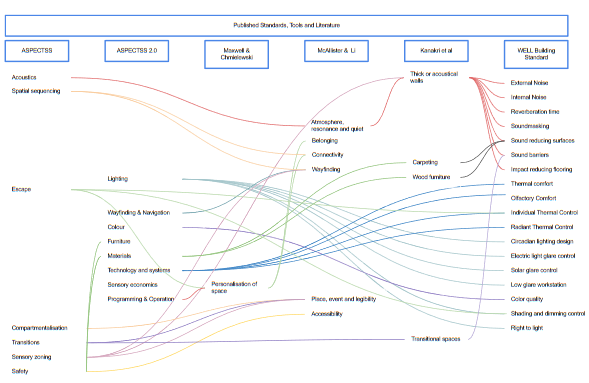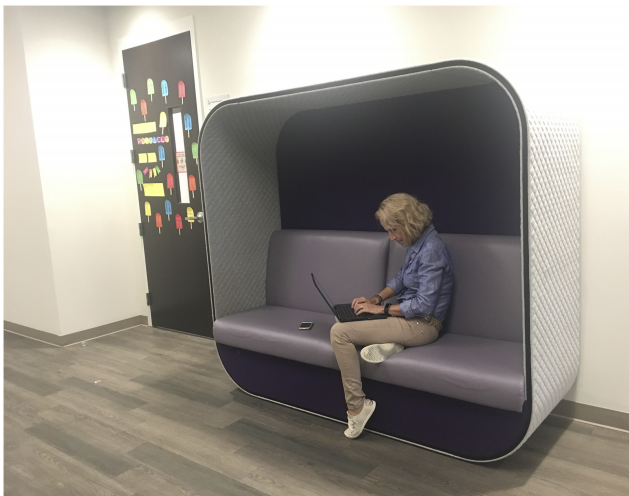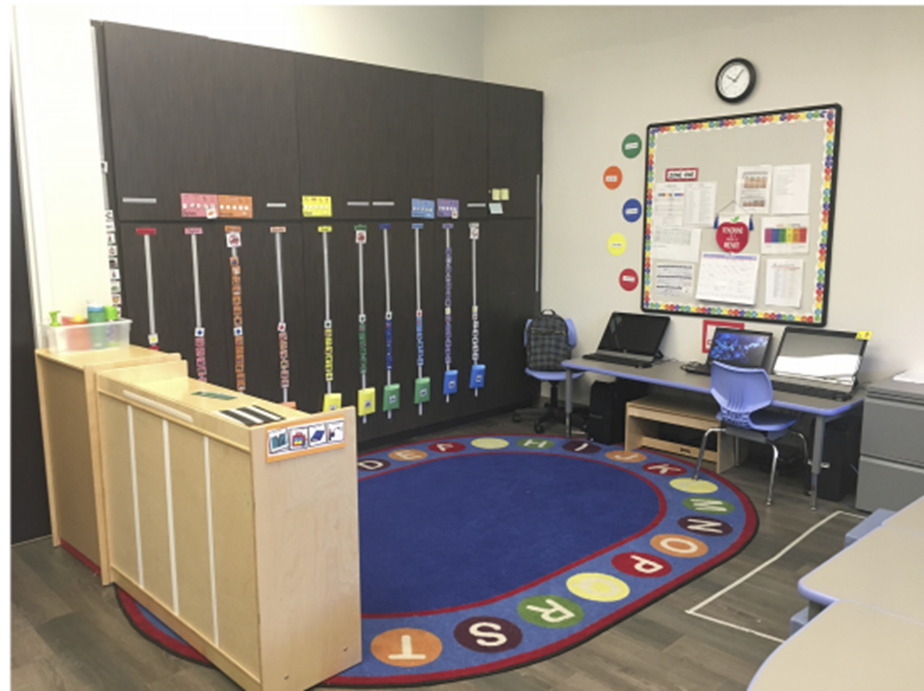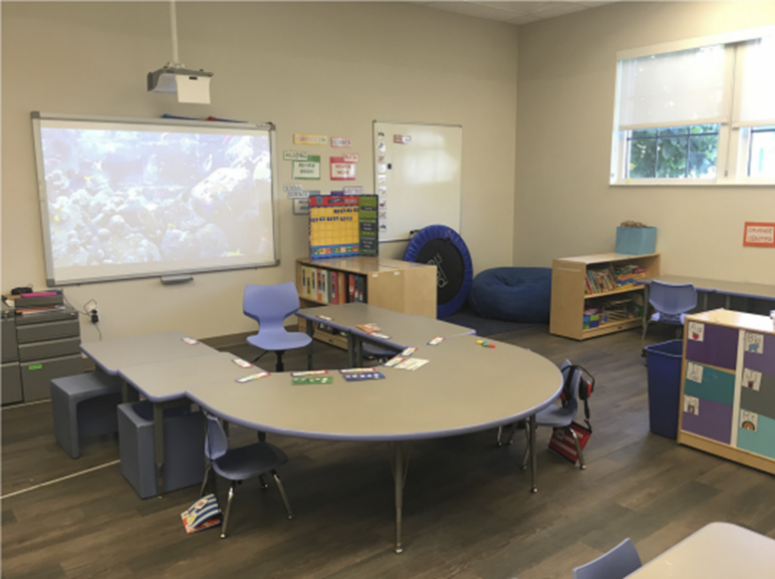研究文章
资源中心收集了大量的文章供读者参考
教务处组织的数字教材建设与应用实践专题讲座,为教师们提供了宝贵的学习和交流机会,推动了数字教材的发展与创新。
教务处组织的数字教材建设与应用实践专题讲座,为教师们提供了宝贵的学习和交流机会,推动了数字教材的发展与创新。
Tyler C. McFayden, Clare Harrop, Kyle Roell, Robert M. Joseph, Rebecca C. Fry & T. Michael O’Shea
Purpose
To evaluate sex differences in autistic traits in youth born extremely preterm (EP; 23–27 weeks) who were later diagnosed with autism spectrum disorder (ASD) at 10-years.
Method
A longitudinal cohort design from the Extremely Low Gestational Age Newborn Study (ELGAN) followed N = 857 EP infants from birth through 10-years. EP infants later diagnosed with ASD (N = 61, 20 females) participated in the study. Group differences were evaluated via inferential and Bayesian statistics (values > 1 suggest evidence for alternate hypothesis) on ASD screeners (M-CHAT at 2-years, SCQ and SRS-2 at 10-years), and gold-standard diagnostic measures (ADOS-2, ADI-R) at 10-years.
Results
Males scored significantly higher than females on measures of Social Affect from the ADOS-2, t(34.27)=-2.20, BF10 = 2.33, and measures of Repetitive and Restricted Behaviors from the ADI-R, t(40.52)=-2.85, BF10 = 5.26. Bayesian estimates suggested marginal evidence for sex differences in Nonverbal Communication, t(30.66)=-1.81, BF10 = 1.25, and Verbal Communication, t(24.64)=-1.89, BF10 = 1.39, from the ADI-R, wherein males scored higher than females. No statistically significant sex differences were identified on any of the ASD screeners at 2 (M-CHAT) or 10 years (SCQ). No significant sex differences were observed on any subscales of the SRS at 10 years.
目的
评估极早产儿(EP;23-27 周)青少年自闭症特征的性别差异,这些青少年在 10 岁时被诊断出患有自闭症谱系障碍(ASD)。
研究方法
采用极低妊娠年龄新生儿研究(ELGAN)的纵向队列设计,对 N = 857 名极度早产儿进行了从出生到 10 年的跟踪研究。后来被诊断为 ASD 的 EP 婴儿(N = 61,20 名女性)参与了研究。通过推论和贝叶斯统计(值 > 1 表明有证据支持另一假设)对 ASD 筛查指标(2 岁时的 M-CHAT、10 岁时的 SCQ 和 SRS-2)和 10 岁时的黄金标准诊断指标(ADOS-2、ADI-R)进行了群体差异评估。
结果
在ADOS-2的社交情感测量中,男性得分明显高于女性,t(34.27)=-2.20, BF10 = 2.33;在ADI-R的重复和受限行为测量中,男性得分明显高于女性,t(40.52)=-2.85, BF10 = 5.26。贝叶斯估计结果表明,ADI-R 的非语言沟通(t(30.66)=-1.81, BF10 = 1.25)和语言沟通(t(24.64)=-1.89, BF10 = 1.39)方面存在边缘性性别差异,其中男性得分高于女性。在 2 年(M-CHAT)或 10 年(SCQ)的任何 ASD 筛查指标上,均未发现明显的性别差异。10 年后,SRS 的任何分量表均未发现明显的性别差异。
Yanru Chen & Laudan B. Jahromi
Children with autism spectrum disorder often demonstrate self-regulation challenges and academic difficulties. Although self-regulation has been well documented as an important factor for academic achievement in neurotypical children, little is known about how it is related to academic learning in autistic children, especially during preschool, a critical developmental period for both emergent academic skills and self-regulatory abilities. It is also unclear whether school engagement or autism characteristics influence the relation between self-regulation and academic learning in autistic children during preschool. Thirty-two autistic preschoolers participated in this study. Direct measures and parent reports were used to measure three dimensions of self-regulation, including executive function, effortful control, and emotion regulation. Classroom-based data from multiple academic programs were used to reflect their average rates of achieving new literacy and mathematics learning goals. Teachers reported the participants’ levels of school engagement, and their autism characteristics were measured directly. Emotion regulation was significantly linked to the rate of meeting literacy learning goals in autistic preschoolers, whereas multiple executive function skills, including inhibitory and attentional control and working memory, were associated with their mathematics learning rate. Emotion regulation demonstrated a stronger association with literacy learning when autistic children were more engaged in classroom activities. Levels of autism characteristics did not mediate or moderate the association between self-regulation and academic learning. Future interventions and teaching should consider fostering self-regulation and facilitating school engagement for autistic preschoolers besides targeting their learning performance on specific academic content to promote their current and future academic success.
患有自闭症谱系障碍的儿童常常表现出自我调节方面的挑战和学业困难。尽管自我调节作为神经畸形儿童学业成绩的重要因素已被充分证明,但人们对自闭症儿童的自我调节与学业学习之间的关系却知之甚少,尤其是在学龄前阶段,因为学龄前阶段是学习技能和自我调节能力发展的关键时期。学校参与或自闭症特征是否会影响学龄前自闭症儿童自我调节与学业学习之间的关系,目前也尚不清楚。32 名学龄前自闭症儿童参与了本研究。研究采用直接测量法和家长报告来测量自我调节的三个维度,包括执行功能、努力控制和情绪调节。来自多个学术项目的课堂数据被用来反映他们实现新的识字和数学学习目标的平均比率。教师报告了参与者的学校参与程度,并直接测量了他们的自闭症特征。情绪调节与自闭症学龄前儿童达到识字学习目标的比率有明显联系,而多种执行功能技能(包括抑制和注意力控制以及工作记忆)则与他们的数学学习比率有关。当自闭症儿童更多地参与课堂活动时,情绪调节与识字学习的关系更为密切。自闭症特征的水平并不能调节或缓和自我调节与学业学习之间的关系。未来的干预和教学除了针对自闭症学龄前儿童在特定学业内容上的学习表现外,还应考虑培养他们的自我调节能力和促进他们参与学校活动,以促进他们当前和未来的学业成功。

|
Ana Belen Lopez-Rodriguez, Carol L. Murray, John Kealy, Clodagh Towns, Andrew Roche, Arshed Nazmi, Michelle Doran, John P. Lowry & Colm Cunningham Background Autism spectrum disorders (ASD) are predominantly neurodevelopmental and largely genetically determined. However, there are human data supporting the idea that fever can improve symptoms in some individuals, but those data are limited and there are almost no data to support this from animal models. We aimed to test the hypothesis that elevated body temperature would improve function in two animal models of ASD. Methods We used a 4 h whole-body hyperthermia (WBH) protocol and, separately, systemic inflammation induced by bacterial endotoxin (LPS) at 250 µg/kg, to dissociate temperature and inflammatory elements of fever in two ASD animal models: C58/J and Shank3B- mice. We used one- or two-way ANOVA and t-tests with normally distributed data and Kruskal–Wallis or Mann–Whitney with nonparametric data. Post hoc comparisons were made with a level of significance set at p < 0.05. For correlation analyses, data were adjusted by a linear regression model. Results Only LPS induced inflammatory signatures in the brain while only WBH produced fever-range hyperthermia. WBH reduced repetitive behaviours and improved social interaction in C58/J mice and significantly reduced compulsive grooming in Shank3B- mice. LPS significantly suppressed most activities over 5–48 h. Limitations We show behavioural, cellular and molecular changes, but provide no specific mechanistic explanation for the observed behavioural improvements. Conclusions The data are the first, to our knowledge, to demonstrate that elevated body temperature can improve behavioural signs in 2 distinct ASD models. Given the developmental nature of ASD, evidence that symptoms may be improved by environmental perturbations indicates possibilities for improving function in these individuals. Since experimental hyperthermia in patients would carry significant risks, it is now essential to pursue molecular mechanisms through which hyperthermia might bring about the observed benefits.
自闭症谱系障碍(ASD)主要是神经发育性疾病,而且在很大程度上是由基因决定的。然而,有数据支持发烧可以改善某些人的症状这一观点,但这些数据是有限的,而且几乎没有动物模型的数据支持这一观点。我们旨在验证体温升高可改善两种 ASD 动物模型功能的假设。
实验方法 我们使用 4 小时全身热疗(WBH)方案,并分别使用 250 微克/千克细菌内毒素(LPS)诱导的全身炎症,来区分两种 ASD 动物模型的体温和发热的炎症因素: C58/J和Shank3B-小鼠。对于正态分布的数据,我们使用了单因子或双因子方差分析和 t 检验;对于非参数数据,我们使用了 Kruskal-Wallis 或 Mann-Whitney 检验。事后比较的显著性水平设定为 p < 0.05。对于相关性分析,数据通过线性回归模型进行调整。
研究结果 只有 LPS 能诱发大脑炎症特征,而只有 WBH 能产生发热范围的高热。WBH 可减少 C58/J 小鼠的重复行为,改善其社会交往,并显著减少 Shank3B- 小鼠的强迫性梳理行为。LPS 在 5-48 小时内明显抑制了大多数活动。
局限性 我们展示了行为、细胞和分子变化,但没有对观察到的行为改善提供具体的机理解释。 研究结论 据我们所知,这些数据首次证明体温升高可以改善两个不同的 ASD 模型的行为体征。鉴于自闭症的发育性质,环境干扰可改善症状的证据表明,有可能改善这些人的功能。由于在患者身上进行实验性热疗会有很大风险,因此现在有必要研究热疗可能带来所观察到的益处的分子机制。 |
Keith Mcallister, Barry Maguire
Abstract
There is a growing consensus that an appropriate classroom environment will aid the performance of the pupil with autism spectrum disorder (ASD). There are, however, very few design guidelines available when considering ASD and the school environment. Such guidelines that do exist tend only to be in general terms. Therefore, this article seeks to highlight design considerations specifically for the ASD-friendly Key Stage 1 (age five to eight) classroom. It will first highlight some of the challenges for those with autism spectrum disorder in a school environment and the triad of challenges faced by architects and designers when considering ASD-friendly classroom design. It will then go on to describe the findings and results of a two-year study carried out in conjunction with the ASD teaching staff of Northern Ireland’s Southern Education and Library Board. These consist of 16 specific design considerations for the Key Stage 1 ASD-friendly classroom applicable to all classrooms for pupils between five and eight years of age.
一个合适的课堂环境将有助于自闭症谱系障碍( ASD )学生的表现,这已成为越来越多的共识。然而,在考虑ASD和学校环境时,可用的设计指南非常少。这种确实存在的准则往往只是笼统的。因此,本文试图突出针对ASD友好型关键阶段1 (年龄5 ~ 8岁)课堂的设计考虑。它将首先强调在学校环境中自闭症谱系障碍患者面临的一些挑战,以及建筑师和设计师在考虑ASD友好型教室设计时面临的三重挑战。然后将继续描述与ASD教学结合进行的为期两年的研究的发现和结果,包括适用于所有5 ~ 8岁学生教室的关键阶段1 ASD友好型教室的16项具体设计考虑。
图1:教师设计的针对孤独症友好型教室模型

Magda Mostafa, Marlene Sotelo, Toby Honsberger
Abstract
Purpose
The objective of this paper is to study the efficacy of the ASPECTSS Design Index’s concepts as drivers of design intervention for educational environments for students on the autism spectrum. Based on the seven principles of acoustics, spatial sequencing, escape spaces, compartmentalization, transitions, sensory zoning and safety, ASPECTSS formed the basis for a preliminary post-occupancy evaluation (POE) and survey of an existing school environment.
本文的目的是研究ASPECTSS设计指数概念作为孤独症谱系学生教育环境设计干预驱动因素的有效性。ASPECTSS基于声学、空间排序、逃避空间、区隔化、过渡、感觉分区和安全七项原则,形成了对现有学校环境进行初步使用后评价( POE )和调查的基础。
Design/methodology/approach
Concepts drawn from the review of other strategies for autism spectrum disorder (ASD) friendly design were integrated with the seven ASPECTSS principles to create a design framework and consequent design retro-fit for a Pre-K-12th grade public school for students on the autism spectrum. The following design interventions were proposed: colour-coding based navigation; acoustical treatments in key circulation spaces; introduction of transition alcoves; classroom reorganisation using compartmentalization principles and the introduction of escape spaces for de-escalation. Specifically, a classroom template of modules of ASPECTSS-compliant layouts was provided to all staff. The efficacy and impact of these interventions were assessed using a whole campus online staff survey with further probing using classroom observations and subsequent interviews.
从对孤独症谱系障碍( ASD )友好设计的其他策略的回顾中得出的概念,与ASPECTSS的七项原则相结合,为一所针对自闭症谱系障碍学生的学前K – 12年级公立学校创建设计框架和随后的设计改造。提出了以下设计干预措施:基于颜色编码的导航;关键循环空间的声学处理;过渡槽的介绍;利用区隔化原则进行课堂重组,并引入逃生空间进行降级。具体来说,为所有工作人员提供了符合ASPECTSS布局的模块的教室模板。这些干预措施的效果和影响是使用整个校园的在线状态进行评估的
Findings
The results show alignment between the implementation of the ASPECTSS informed design interventions and responses to nine of the Likert scale items were all significantly lower than the middle response, indicating a high degree of satisfaction from survey respondents. These questions and responses related to the colour scheme facilitating ease of navigation for visitors of the school, the acoustics of the building successfully mitigating sound magnification and subsequently student distractibility, the organisation of the classrooms enhancing learning and the de-escalation zones allowing improved management of disruptive behaviours in the classroom.
结果表明,ASPECTSS知情设计干预措施的实施与李克特量表中9个项目的反应之间的一致性均显著低于中间反应,表明调查对象的满意度较高。这些问题和反应与色彩方案有关,便于学校游客的导航,建筑物的声学成功地减轻了声音放大和随后的学生分心,教室的组织增强了学习和降级区,从而改善了对教室中破坏性行为的管理。
Research limitations/implications
This study focuses primarily on the Autism ASPECTSS Design Index as a framework for assessing classroom efficacy. Other tools and frameworks may produce different insights. A single school site was studied. Validation of these findings in other school environments is necessary before generalising these strategies at scale. The use of qualitative tools, primarily teacher and staff surveys, provides one lens into the efficacy of these design strategies. Further research using measurable biometric indicators such as heart-rate and stress levels measured through wearable technology could provide a first step towards the triangulation of these findings
本研究主要关注作为评估课堂效能感框架的孤独症ASPECTSS设计指数。其他的工具和框架可能会产生不同的见解。对单个学校场地进行了研究。在对这些策略进行规模推广之前,有必要在其他学校环境中验证这些发现。定性工具的使用,主要是教师和员工调查,为这些设计策略的有效性提供了一个视角。通过可穿戴技术测量的心率和压力水平等可测量的生物特征指标的进一步研究可以为这些发现的三角化提供第一步。
Practical implications
These findings could help provide more standardised best practices for designing learning environments for autism, potentially providing supportive strategies with real impact on learning quality, skill development and knowledge acquisition in school environments. This could potentially have economic implications by supporting more efficient progress for autistic students through their school curriculum.
这些发现有助于为孤独症学习环境的设计提供更标准化的最佳实践,并可能为学校环境中的学习质量、技能发展和知识获取提供具有实际影响的支持性策略。这可能会产生潜在的经济影响,通过学校课程支持孤独症学生更有效的进步。
Social implications
Similar to economic impact, if validated and generalised, these findings could help with sense of accomplishment, general mental health improvement, alleviation of family stress and potential reduction of stigma in the autism community.
与经济影响类似,如果得到验证和推广,这些发现可能有助于孤独症社区的成就感、一般心理健康的改善、家庭压力的减轻和污名的潜在减少。
Originality/value
There is a slowly emerging field of design guidance for autism schools, but very little empirical evidence on the measurable efficacy of these strategies. This research provides one type of such evidence, as measured by the perceived impact from the point of view of staff and teachers at the school. Keywords Universal design, Autism, Inclusive design, School design.
针对孤独症学校的设计指导领域正在慢慢兴起,但关于这些策略的可测量功效的经验证据非常少。本研究提供了一种类型的证据,即从学校工作人员和教师的角度衡量的感知影响。关键词通用设计、孤独症、包容性设计、学校设计
图1:映射了ASPECTSS,其他孤独症设计文献和WELL建筑标准的舒适标准之间的建筑概念和标准的一致性,显示了这些工具之间概念的重叠和差距

图2:过渡凹室
用于在教室中从高刺激活动转向低刺激、高注意力活动时进行感官调节,反之亦然。在安装之后,他们被用作学生要求的奖励时间,以支持正强化

图3:符合ASPECTSS标准的教室布局图(小组活动区)

图4:个人工作台空间

图5:全景图

Vasiliki Holeva, V.A. Nikopoulou, C. Lytridis, C. Bazinas, P. Kechayas, M.D. Kerasidou, C. Karatsioras, N. Geronikola, G.A. Papakostas, V.G. Kaburlasos, A. Evangeliou
Abstract
Difficulties with social interaction characterize children with Autism Spectrum Disorders and have a negative impact in their everyday life. Integrating a social-humanoid robot within the standard clinical treatment has been proven promising. The main aim of this randomized controlled study was to evaluate the effectiveness of a robot-assisted psychosocial intervention and the secondary aim was to investigate potential differences between a robot-assisted intervention group and a control group receiving intervention by humans only. The analysis of the results showed that robot-assisted intervention could be beneficial by improving children’s psychosocial skills. This improvement was highlighted by neuropsychological testing and parent reporting. Group comparison only presented minimal statistically significant differences. The study underpins the potential of robot-assisted interventions to augment standard care.
难以进行社会互动是孤独症儿童的特征,并对他们的日常生活产生负面影响。将社会类人机器人集成到标准的临床治疗中已被证明是有前途的。这项随机对照研究的主要目的是评估机器人辅助的社会心理干预的有效性,次要目的是调查机器人辅助干预组和仅接受人类干预的对照组之间的潜在差异。结果分析表明,机器人辅助干预有助于提高儿童的社会心理社会技能。神经心理测试和家长报告强调了这一改善。组间比较仅呈现最小的统计学显著差异。这项研究支持了机器人辅助干预以增强标准护理的潜力。
图1:研究准备

图2:治疗室

浙江省杭州市萧山区耕文路1108号
0571-86933421
info@nsercasd.cn
周一至周五: 8:00-19:00
周六: 8:00-14:00
周日: 休息
